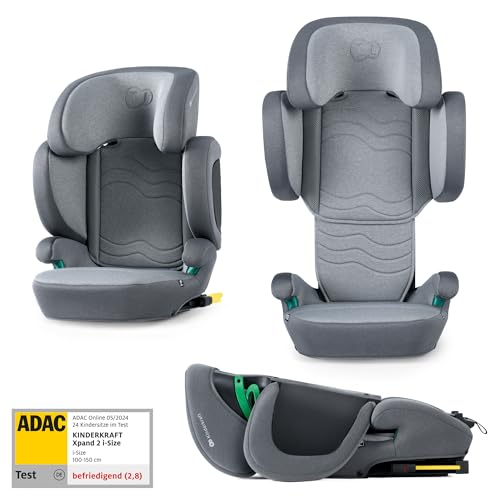10 Misconceptions Your Boss Shares Regarding Prams

Prams and Pushchairs: A Comprehensive Guide for New Parents
Browsing the world of baby transportation can be frustrating for brand-new moms and dads, especially when it concerns selecting between prams and pushchairs. Each choice offers unique advantages and limitations, implying that making an informed decision is crucial. This post aims to offer a thorough understanding of prams and pushchairs, their distinctions, functions to consider, and tips for picking the best one.
Comprehending the Basics: Prams vs. Pushchairs
Prams and pushchairs are terms typically utilized interchangeably, however they describe different types of baby transport systems.
Meanings:
- Prams: Traditionally created for newborns and babies, prams have a big, totally flat bassinet that permits ideal comfort and security during early phases of a child's life.
- Pushchairs: Designed for older babies and toddlers, pushchairs generally have an upright seat that appropriates for children who can support their head and neck. They typically feature adjustable recline alternatives.
Key Differences
| Feature | Pram | Pushchair |
|---|---|---|
| Design | Flat bassinet | Upright seat |
| Age Suitability | Newborn to around 6 months | 6 months to 4 years |
| Portability | Generally much heavier, less foldable | Frequently light-weight and foldable |
| Convenience | Cozy for newborns, tight fit | Adjustable, can be reclined |
| Use | Suitable for strolls and leisure | Versatile for daily activities and travel |
Functions to Consider When Choosing Prams and Pushchairs
Safety Features
- Harness systems (5-point vs. 3-point)
- Braking systems (foot-operated vs. hand-operated)
- Stability and sturdiness of the frame
Weight and Portability
- Consider the weight of the pram or pushchair
- Try to find a design that folds quickly for transport
Size and Storage
- Inspect measurements for fitting through doorways and in automobile trunks
- Look for extra storage alternatives like baskets or pockets
Convenience
- Padded seats and adjustable recline positions
- Suspension systems for smoother rides on rough surfaces
Weather condition Protection
- UV defense in sunshades
- Alternatives for rain covers and windscreens
Wheels and Maneuverability
- Wheel size and type (repaired vs. swivel)
- Suspension systems that aid handling and convenience
Longevity
- Designs that convert from pram to pushchair
- Tougher frames that can accommodate growing kids
Popular Types of Prams and Pushchairs
When thinking about prams and pushchairs, parents frequently discover various designs catering to specific requirements. Here are some well-known types:
1. Requirement Prams/Pushchairs
These are good all-rounders, designed for everyday use with a durable frame and adequate storage area. Small Prams For Newborns are typically adjustable and can deal with numerous terrains.
2. Travel Systems
These include a cars and truck seat and a stroller that can be utilized together, making it simple to move the baby from the cars and truck to the pram without waking them up.
3. Umbrella Strollers
These are light-weight and foldable, best for quick outings and travel. While convenient, they frequently do not have some of the safety and comfort features discovered in heavier models.
4. All-Terrain Strollers
Developed for off-road experiences, these strollers have larger wheels and a more rugged frame, making them ideal for active families.
Selecting the Right Pram or Pushchair
When picking the best pram or pushchair, moms and dads ought to take the following steps:
- Assess Lifestyle Needs: Consider how you will use the pram or pushchair (day-to-day strolls, travel, unequal terrain) and pick appropriately.
- Test Drive: It's advantageous to physically check the designs at the store, looking for dealing with, comfort, and weight.
- Research study Brands: Look at evaluations and recommendations from other moms and dads about particular brands or designs.
- Consider Future Needs: Think ahead to make sure the option will work as the child grows. Convertible models use versatility.
- Budget: Set a budget plan but also factor in quality and longevity. Sometimes investing more initially can save costs in the long run.
Often Asked Questions
What is the very best age to start using a pushchair?
Most pushchairs can be used for babies from about 6 months old when they can sufficiently support their heads and necks. Make sure to inspect the producer's requirements.
Are prams appropriate for newborns?
Yes, prams are ideally fit for newborns due to their flat bassinet style, supplying a comfy and safe and secure environment.
How do I clean a pram or pushchair?
Constantly refer to the maker's standards, however the majority of covers are removable and can be washed. Clean down the frame with a wet cloth and avoid using severe chemicals.
Can I use a pram or pushchair on public transportation?
Various models differ in size; lightweight and foldable alternatives are generally better for buses or trains. However, constantly look for transport regulations in your location.
The length of time can I use a pram or pushchair?
It usually depends on the weight limit specified by the maker, frequently between 15-50 lbs, or up until your child no longer wishes to be pushed.
Picking between a pram and a pushchair is a significant choice that caters to the way of life and needs of both the parent and the kid. By comprehending the distinctions between the two, assessing vital functions, and selecting the right model, moms and dads can guarantee they have a safe, comfortable, and useful transport option for their little ones.
Arming oneself with understanding offers moms and dads not only assurance but likewise the self-confidence to make the best option for their kid's early experience into the world. Different way of lives demand different options, so making the effort to research and test what fits can alleviate a few of the tensions that feature brand-new parenthood. Happy strolling!

